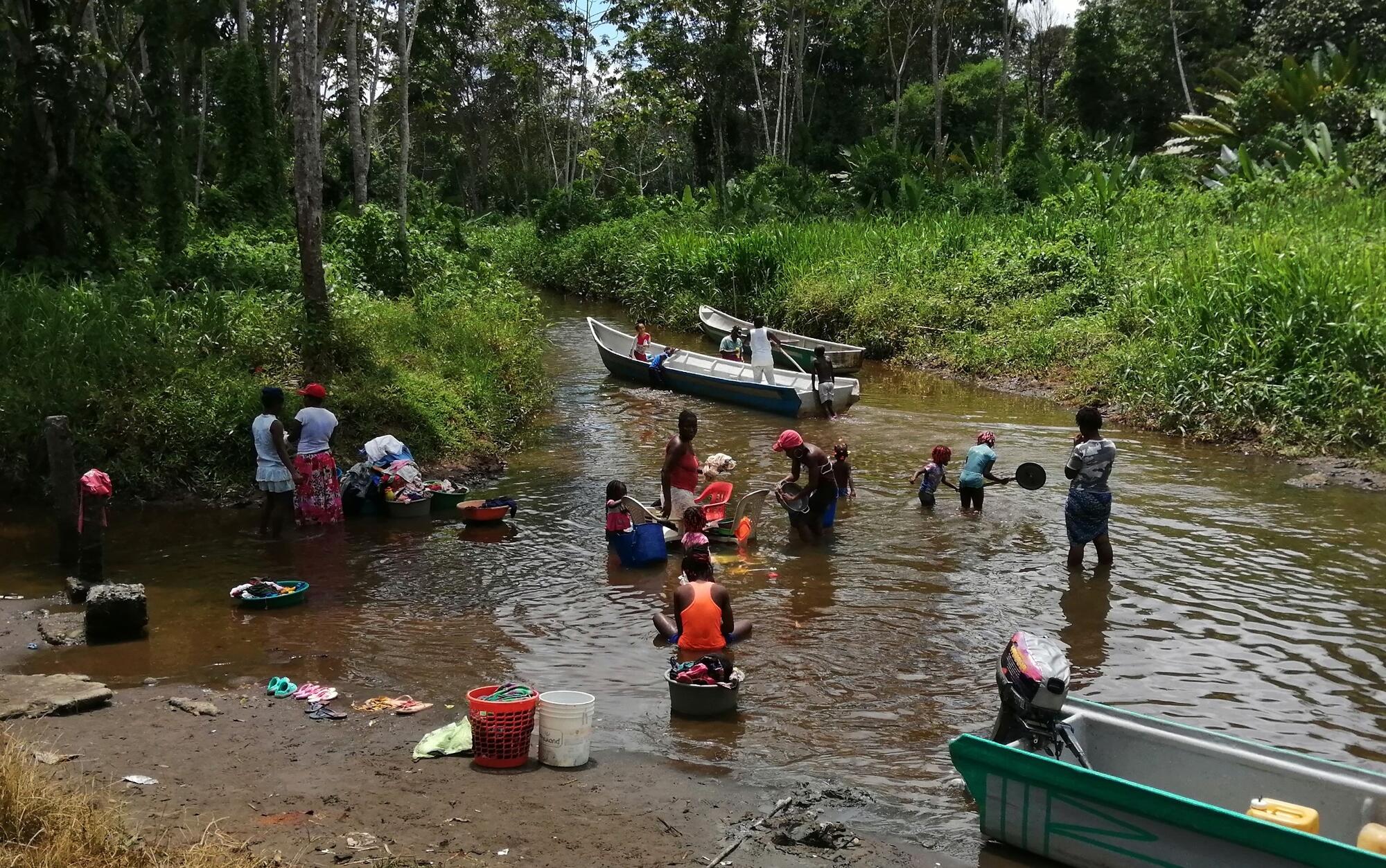
But this time around MSF has a new strategy. Rather than focus on health posts and infrastructure (which tend to fall down again), a “people-centred approach” has been adopted that aims to increase their resilience to repeated cycles of conflict, explains Samuel.
That means putting MSF teams more permanently in communities – of course giving direct medical care, but also engaging with traditional self-help systems.
“Even before the conflict, these communities created their own coping mechanisms, often based on traditional health practices,” says Argote.
This explains why I am now upriver talking to an elderly birth attendant about how much she charges to deliver a baby.
“It’s 200,000 pesos for boy and 100,000 for a girl,” she says, though why boys cost more is not exactly clear.
For the next few days, while the medical team are busy dodging hornets in the clinic, I wander through the community talking to spiritual healers who fix the evil eye, yerbateros (herbalists) who treat malaria with local plants, and a cosero – ‘stitcher’ – who sews up wounds for 20,000 pesos a stitch.
Most adults bear wounds, often from razor-sharp machetes, and not all are accidents. Alcoholism and domestic disputes are rife in these riverine communities.
Then we meet Wilson, a microscopista from a village downriver. He is the remnant of a once-strong network of locals trained to use a microscope to spot malaria parasites on blood samples smeared on glass slides.
Years back, every village had a microscopista, plus a powerful microscope, some basic lab supplies and a box of malaria pills to treat positive cases. This brought to their doorstep lifesaving diagnosis and treatment for a disease which struck them down more often than any other.
But like many things in rural Colombia, the system here has slowly wound down. Microscopistas are no longer contracted by local health departments, supplies rarely arrive, and, without proper maintenance, the microscopes are growing mould.
Could the system be revived? Wilson is hopeful: he has tested 22 patients in two days, of whom 13 were positive for the most deadly falciparum strain. But they will still have to travel to the hospital to get treatment – or take their chances with the home-grown herbal remedy.
Yerbateros also use their anti-fever concoctions to treat COVID-19, which supposedly peaked in the area last May. Many swear by infusions of matarraton, a shrubby tree common throughout Colombia, whose leaves are a staple for home cures and are now touted as a miracle cure for COVID-19. As its name – “mouse-killer” – suggests, extracts have proven pharmacological effects on rodents and insects, and it is commonly used to lower fevers.
But if COVID-19 has been and gone, malaria and ailments locally referred to as ‘virosis’ or ‘quiebrahuesos’ (breakbone) – such as dengue, Zika and chikungunya – still persist. There is a long queue of people with symptoms waiting outside the makeshift clinic.
In the classroom next door, perched on rickety school chairs, children are colouring in photocopied sheets, a thoughtful touch by the MSF psychologist who brought pencils and paper.
“This keeps them occupied while their mums are waiting for the clinic,” she says.
With the lack of family planning and reproductive healthcare, many mothers have five children, even in their 20s, and are desperate for the contraceptive implants that can prevent pregnancy for five years.
"conflict" - Google News
December 05, 2020 at 12:04AM
https://ift.tt/3mJ26DE
Getting closer to Colombia's conflict | MSF - Médecins Sans Frontières (MSF) International
"conflict" - Google News
https://ift.tt/3bZ36xX
https://ift.tt/3aYn0I8
Bagikan Berita Ini














0 Response to "Getting closer to Colombia's conflict | MSF - Médecins Sans Frontières (MSF) International"
Post a Comment